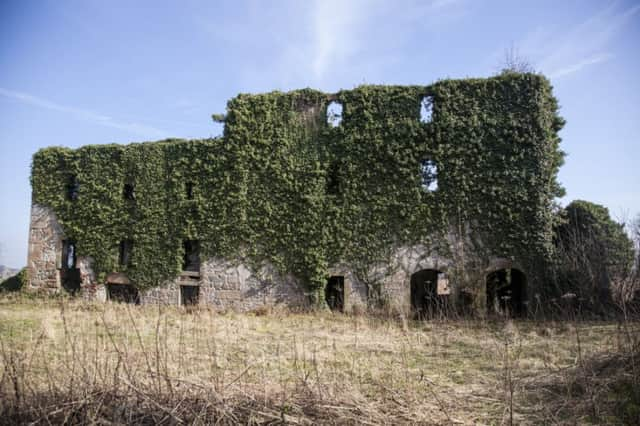Ruined whisky distillery gets new lease of life


Kennetpans helped found two of the world’s most famous drinks brands, Jamesons and Haigs, now promoted by David Beckham.
It was run by the charismatic and controversial Stein family, whose descendants include the Prime Minister, and who pioneered the exporting of Scotch whisky worldwide.
Advertisement
Hide AdBut 200 years ago a dispute erupted between the Steins and the government over duty payments. The distillery was forced into bankruptcy and has become a forgotten gem of Scotland‘s industrial heritage.


Now a project aims to breathe new life into the remains of the old distillery building, on the banks of the River Forth near the Clackmannanshire Bridge.
CONNECT WITH THE SCOTSMAN
• Subscribe to our daily newsletter (requires registration) and get the latest news, sport and business headlines delivered to your inbox every morning


More than £60,000 will be spent to ensure the building does not deteriorate further and help visitors learn about the incredible history of the distillery and the Stein family - known as Scotland‘s “whisky mafia”.
Kirsty McAllister, Cultural Heritage Officer for the Inner Forth Landscape Initiative, which is coordinating the project, said: “This building was the world’s first whisky distillery on an industrial scale.
“It is a massive site. There is the main distillery building, a number of outbuildings and a pier which was used for transporting products in and out.
Advertisement
Hide Ad“It is part of Scotland’s forgotten industrial and trading past. The whole Inner Forth area was at one time a hub of vibrant trading activity and it fed a demand nationally and internationally for local produce like whisky.”
Heritage
Kennetpans - and the nearby Kilbagie distillery - were producing alcohol in the early 1700s. Owner John Stein and his family built Scotland’s first railway to connect the two buildings and linked them by canal.
Advertisement
Hide AdScotland’s first James Watt steam engine was used at Kennetpans and the two distilleries pioneered the export of Scotch whisky.
By the 1770s production was so high that the duty paid by the two distilleries was higher than all land tax collected in Scotland that year.
But changes in the law imposed increases in duty and restricted the exporting of spirits to England. That proved a death blow to the factories and Kennetpans closed for good in 1825.
John Stein was known as “The Father of Commercial Whisky Distilling”. His daughter married John Haig - who launched Haig whisky, and another relative John Jameson, took over Stein’s distillery interests in Dublin.
Kirsty McAllister said: “At the moment this site looks like the world’s biggest plant pot, it is completely overgrown. We have to clear that and hopefully carry out some excavation work to discover how safe it is.”
A spokesman for Historic Scotland said: “The project is called A Wee Dram at Kennetpans and it involves £30,000 of Heritage Lottery funding and £30,000 of money from Historic Scotland.
Advertisement
Hide Ad“It will last three years and the end result is that there will be vegetation clearance, some targeted building consolidation work on masonry that looks it might collapse, and some interpretation boards informing people what the distillery used to do.
“The work will finish in 2017. It won’t be a visitor charging attraction, there are sensitivities because there are neighbours and we need to respect their privacy. But it will make it more accessible to the public.”
SCOTSMAN TABLET AND IPHONE APPS
